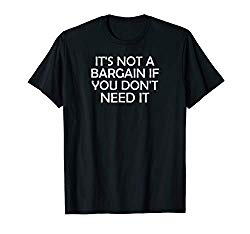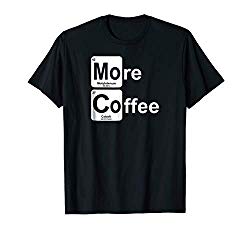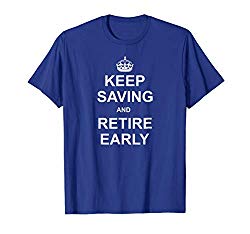The U.S. Labor Market In A Pandemic
The Bureau of Labor Statistics has had time to crunch the numbers of the U.S. labor market for calendar year 2020 and the official data are coming out. Prior to March 2020, the U.S. labor market was on fire. From 2016 to 2019 average monthly increases in nonfarm employment hovered between 170,000 and 200,000.
Then in March 2020 we lost 1.7 million jobs. In April we lost 20.7 million jobs. Those were the two largest declines in history. But they were followed by the 4 largest monthly increases in history – 2.8 million, 4.8 million, 1.7 million, and 1.5 million jobs came back from May to August.

Here’s what the above data looks like just for 2020:

It was a roller coaster ride, but since we all just experienced it I think that doesn’t need to be pointed out.
Labor Market Productivity, It’s Confusing
Labor productivity as defined by the BLS is the ratio of real output to hours worked. They have a nifty little video to explain it.
All throughout the 2010s productivity had been steadily rising just over one percent per year on average. What happened in 2020? Another roller coaster ride.
Productivity actually went up by a huge percentage in the second quarter (April – June) of 2020. Yes, that’s after COVID hit full force. I’ll let the BLS explain:
The second quarter of 2020 saw historically large decreases in both output and hours worked. Our measures of nonfarm business began in 1947, and the second quarter of 2020 had the largest declines ever recorded in both output (-36.8 percent) and hours worked (-43.2 percent). While the resulting labor productivity growth of 11.1 percent was the largest increase since the first quarter of 1971 (12.3 percent), the large increase in second quarter 2020 resulted from the devastation of the U.S. economy in terms of both employment and output.
So in a nutshell both hours worked and output dropped in a big way, but hours worked dropped way more. So the result is that more was being produced per hour worked, by 11.1%. The BLS explains:
How can productivity grow at near a record rate with such large declines in output and hours worked? Many consumers avoided stores, restaurants, and other public gatherings to reduce the risk of catching or spreading the virus that causes COVID-19. With shutdowns of nonessential businesses and limited contact and other restrictions for businesses still opened, businesses had to adapt quickly to reduce work hours while trying to preserve output. For example, many eating establishments focused on carryout and outdoor seating to limit their revenue loss. Additionally, online buying and home delivery became more widespread. The data from the second quarter show hours worked fell faster than output, resulting in productivity growth.
If COVID has shown me nothing else it’s shown we humans are experts at adapting, as I’ve pontificated on before.
Productivity continued to rise in the third quarter, but dropped in the fourth as more people went back to work and hours worked outpaced production.

Unemployment
The unemployment situation has been yet another wild ride. As of this post the national unemployment rate is 6%. In February 2020 prior to the effects of COVID it was 3.5%, and after COVID hit it peaked at 14.8% in April 2020.
Here’s a look at 2020’s unemployment data up until now:

Like anything else it depends on where you live, geography is king of the sciences but hey I’m biased. Last May I wrote a post highlighting a very cool interactive map that shows unemployment in the U.S. by county. The map is still being updated so if you’d like you can check that out.
For a more basic rundown, here’s a look at unemployment by state in February 2020 before COVID:

As you can see things were cooking on all cylinders and 12 states were even below 2.9%. Here’s how things look now by state:

A few things stand out. Some states that were relatively high before COVID are still higher than others like New Mexico, Louisiana, and Pennsylvania. Others like California, New York, Illinois, Connecticut, Massachusetts, and Rhode Island, and Nevada were doing as good or better than the country before COVID, but are now doing worse.
Every state has handled and been affected by COVID differently. I’m not familiar enough with the situations of the states that I just mentioned as outliers to have an idea of what’s gong on, but if you do feel free to comment below.
Consumer Prices
The consumer price index, or CPI, as defined by the BLS is a measure of the average change over time in the prices paid by urban consumers for a market basket of consumer goods and services. It’s what we commonly refer to as inflation. It’s not a key measure of the labor market but of the economy in general.
How was inflation in 2020? From the BLS:
From 2019 to 2020, consumer prices for all items rose 1.4 percent. Over that period, food prices increased 3.9 percent, a larger percentage increase than the 12-month increase of 1.8 percent in 2019. Food at home prices increased 3.9 percent in 2020, the largest over-the-year increase since 2011.
Here’s a nifty chart showing price changes of selected items in 2020:

Most of these make sense to me, like airline fares obviously. I would guess the biggest increase of used cars and trucks would be a result of high demand from city dwellers who didn’t own a car but suddenly wanted one to avoid public transportation and to get out of the city. At least they’re buying used 🙂
Going Forward
So there you have it financial warriors, a brief look at the U.S. labor market and consumer prices in 2020 with the authoritative BLS data. How’s 2021 going to play out? Well if you follow the noise of some prognosticators you’ll see predictions of a 4.1% unemployment rate by years end.
Part of me says “yeah right” but heck what do I know? I know about as much as that guy at Goldman Sachs who probably regularly goes on CNBC making these kinds of predictions, in addition to stock market predictions. Every once in a while he might get it right, otherwise known as luck.
Either way you can count on me to post updates in my unique style, maps and all 🙂










































Another great article Dave and love the maps as usual! Definitely some surprising results. Agreed that humans are so adaptable. It’s been a fascinating thing to watch over the last year.
Yeah I don’t think anyone could have predicted how the economy reacted, and part if me still thinks there’s a disconnect going on but we’ll see. Thanks for the kudos!
if you ask me food inflation for groceries really is running kind of hot. like mrs. smidlap said a couple of weeks ago. everything costs 5 bucks now. ketchup? 5 bucks. kleenex? 5 bucks. it’s like the formerly cheap crap got expensive.
this whole employment situation is kinda goofy for me with reality versus stats. for instance, of those jobs a year ago when we had full employment how many of them were any good with a living wage and benefits?
Yes as the chart showed food has gone up a lot, although at Aldi I don’t really notice too much of a difference in many things. As for living wage jobs, there’s millions of teens in the labor market working jobs that aren’t intended to be living wage jobs, but starter jobs. But like you I think there’s some cognitive disconnect between the economy and the COVID situation, we’ll see.
Awesome summary dude. Really intriguing data here, so thanks for the effort synthesizing in one easy-to-digest article. I agree on the food thing. I primarily buy staples like meat and veggies and didn’t see prices rise much at all. However, on more discretionary items like chips, etc. I absolutely did. Nice to know that we human are adaptable and ride this initial Covid crunch fairly well.
“covid crunch” and the price of chips rising. Nice one, well played 🙂
Great stuff Dave, frankly I’m surprised by the employment recovery numbers. With the entire hospitality and travel industries in chaos last year, I would have expected much higher unemployment. And, the massive demand for food banks suggests lots of folks still aren’t working. Having said that, 2021 is definitely going to be a better year!
I agree, perception doesn’t seem to match the data but that’s true for many things in life. Yes indeed, ’21 is already shaping up to be stellar!
It’s been such a mind boggling thing to look at the economic data numbers over the past months. The worst pandemic in the entirety of mankind yet we are crushing every goal that we will set. Soon, unemployment numbers are going to go down to 4%!
Well to be accurate it’s far from the worst pandemic in history but yes the numbers are seemingly not related to the situation.
Hi Dave. Thanks for the (as-always) interesting read. Regarding the high unemployment in NY, one contributor is likely that Broadway Theater has been closed for over a year now and typically brings in substantial revenue. Here’s a quote from a PBS News Hour segment from Feb. 5, 2021: “Curtains haven’t risen since March (2020), with deep personal and financial impacts. By one count, Broadway is directly responsible for nearly 100,000 jobs in New York City alone. And, as a leading attraction for people who travel to the city, it has an economic impact of nearly $15 billion.”
Also, from other parts of the Broadway Theater Industry, the estimate of ticket buyers who are tourists to the city is upwards of 65%.
Countless jobs that are not theater-specific but theater-adjacent (like hotels, restaurants, tour operators, taxi drivers, hot dog carts, horse drawn carriage rides, etc.) have been significantly impacted too, including the NY Marriott Marquis letting their ENTIRE Food and Beverage department of approximately 1,200 people go last month (after having been furloughed for a year).
Anyway, I’ve been enjoying your blog for the past year or so and thought I’d chime in for the first time in response to your musings about why the unemployment numbers in some states are still relatively so high. I can’t help but wonder if the places with the highest unemployment now are places that are similarly “large-crowd-tourism” dependent as well?
Thanks again for the article and keep up the great work!
Wow, 100,000 jobs, that’s nuts! I had no idea one theater operation could be so big. I do realize NYC is very entertainment and accommodation oriented so it makes sense in many ways that they’re still suffering so many job losses. I heard the same about DisneyLand in Cali – unlike Disney World in FLA it’s still closed and hemorrhaging jobs and money. Thanks for the great comment!
Great article as always. I’m currently living in one of those 4% – 5.9% areas and *everywhere* is hiring. Low wage jobs have signon bonuses, news stories are out there about nobody being able to get an Uber because of demand way exceeding the number of drivers. Wage inflation seems to be on the way, just a lot of “promotions” going on instead of directly raising the wage.
Same here, the Washington D.C. area is generally immune to most negative economic things, and we have the highest median incomes in America. I read that a huge % of restaurant have closed in America, yet I haven’t seen a single one near me close, and restaurants are everywhere here.
Great set of data Dave! Clearly we’re not back to full employment, but I find it fascinating that productivity jumped so much during the pandemic.
On one hand it makes perfect sense… instead of hours of commuting, people logged in from home and got working. Instead of idle chit-chat around the watercooler they focused on working. Long lunches outside of work probably stopped happening too.
While there could be other reasons for the productivity jump, it does show how the digital transformation could be make our lives more efficient and productive.
Good stuff! Keep up these great posts!
Great points Tako, the lack of commute and time wasted on water-cooler crap at the office are things I didn’t focus on. I also think it was just a case of people hunkering down and getting a bit in “emergency mode”, which means they just worked harder.
Thanks for the kudos dude, much appreciated!